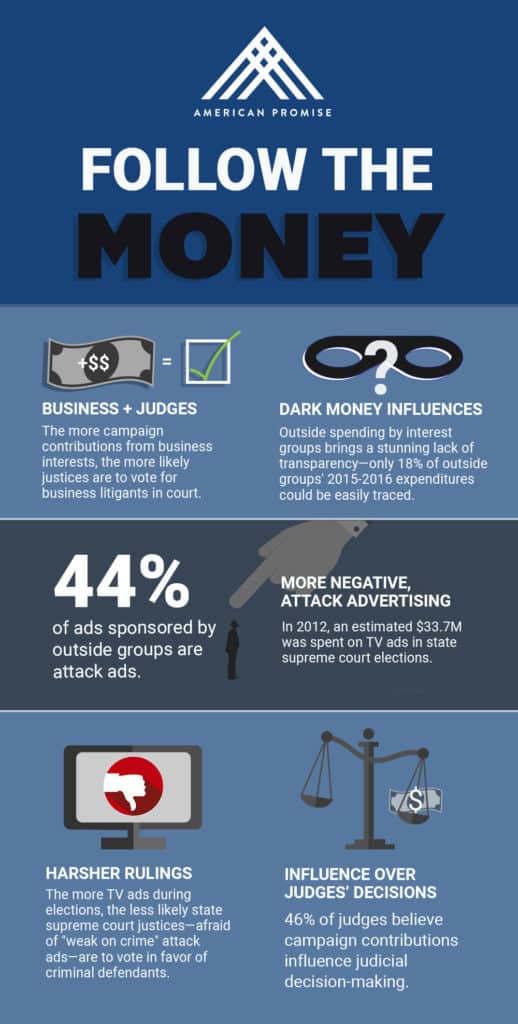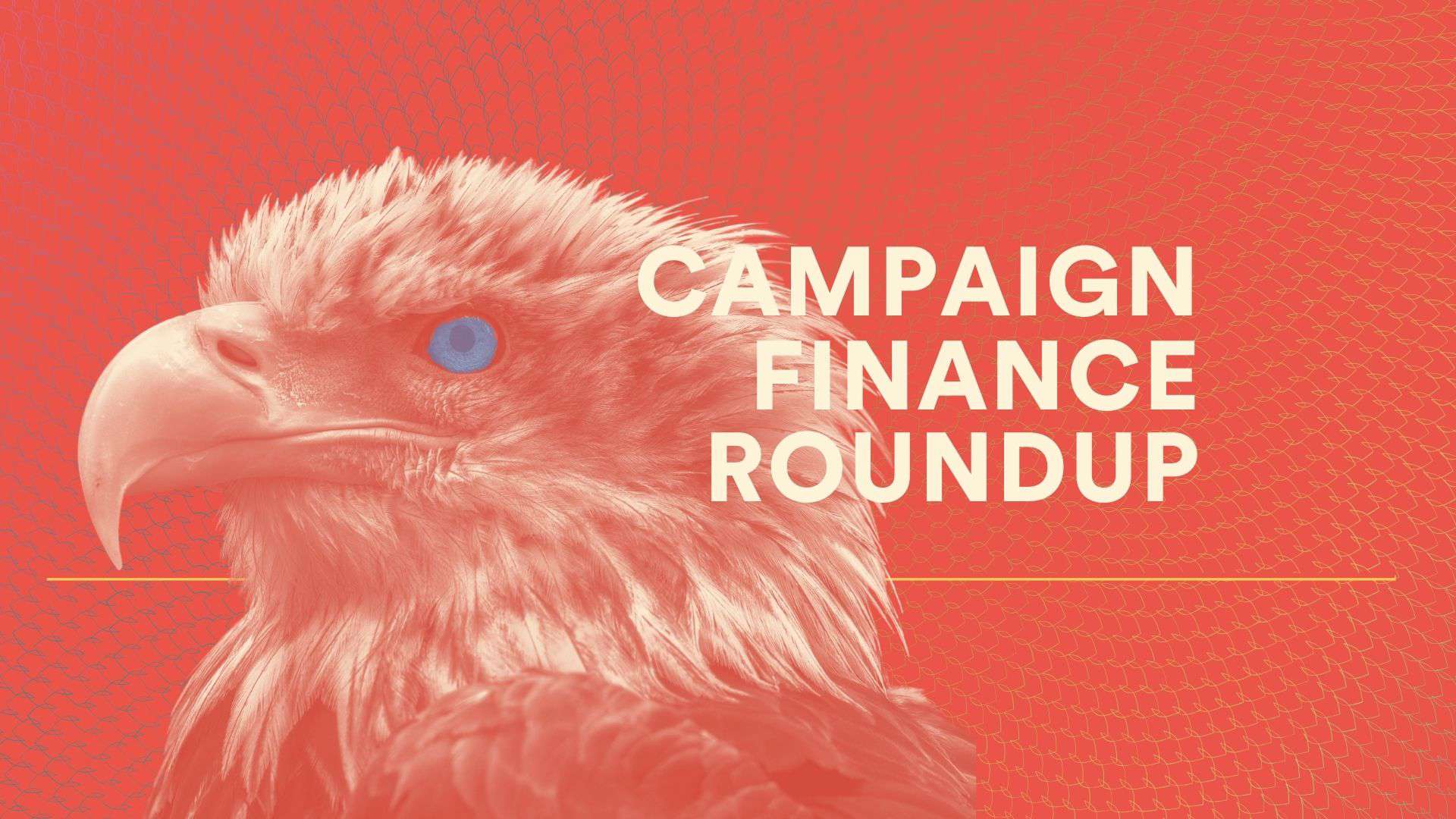According to the American Constitution Society, in the 15 years since the last significant data collection, fundraising for judicial campaigns has more than doubled, from $83.3 million in the 90s to $206.9 million in the 2000s. Wondering how all that money influences our judicial branch? Here are a few ways, all from empirical research studies.

1. Business + Judges: “There is a significant relationship between business group contributions to state supreme court justices and the voting of those justices in cases involving business matters. The more campaign contributions from business interests justices receive, the more likely they are to vote for business litigants appearing before them in court.” Source.
2. Dark Money Influences: “The growth of outside spending by interest groups has brought with it a stunning lack of transparency. For the first time, this report quantified the amount of money in state supreme court elections coming from sources concealed from the public. We found that only 18 percent of interest groups’ outside expenditures during 2015-16 could be easily traced to transparent donors.” Source.
3. More Negative Attack Advertising: “In 2012, an estimated $33.7 million dollars was spent on TV ads in state supreme court elections, with unprecedented levels of independent expenditures and electioneering by outside groups in particular. As is often the case, outside groups delivered messages via these ads that were more harshly negative than those put forth by the candidates and their campaigns. Forty-four percent of the ads sponsored by outside groups were attack ads. In contrast, only 2 percent of candidate ads and 11 percent of party-sponsored ads were negative in tone.” Source.
4. Influence Over Judges’ Decisions: “Forty-six percent of judges believe that campaign contributions have at least ‘a little influence’ on their decisions…Moreover, 80 percent of judges believe that with campaign contributions, interest groups are trying to use the courts to shape policy. Even worse, judges generally agree that money matters in judicial decision making.” Source.
5. Harsher Rulings: “The more TV ads aired during state supreme court judicial elections in a state, the less likely justices are to vote in favor of criminal defendants. In a state with 10,000 ads, a doubling of airings is associated on average with an 8 percent increase in justices’ voting against a criminal defendant’s appeal. Justices in states whose bans on corporate and union spending on elections were struck down by Citizens United were less likely to vote in favor of criminal defendants than they were before the decision. Citizens United changed campaign finance most significantly in 23 of the states where there were prohibitions on corporate and union electioneering prior to the decision. In these states, the removal of those prohibitions after Citizens United is associated with, on average, a 7 percent decrease in justices’ voting in favor of criminal defendants.” Source.




